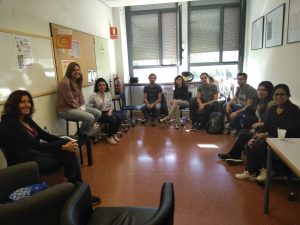It is known that selecting the appropiate journal to publish new advances in a given field could become a cumbersome task. As early stage researchers (ESR), we normally delegate this task into the expertise of our supervisors, since they have better a priori estimators to forecast the chances of the article acceptance.
The other day few AdMoRe ESRs had the chance to attend a coffe talk dedicated to explain how different journals are structured. There are plenty of ways to classify the journals. For instance, a first classification can be done regarding the importance of the journal into a given community. The main indicator for this classification is the impact factor, which measures the mean number of citations per article in a given journal. Indeed, all journals that belong to the same community are ranged by this quantity and then different quartiles are created, being the first quartile (Q1) those journals with higher impact factor. Normally, researchers tend to have predilection to publish in first quartile journals but it is important to keep in mind that the first quartile would not exist if there were not second and third quartiles.

An emerging trend of journals that have become popular through the past years are the so called Open Access journals. Indeed, traditional journals require expensive subscriptions to have access to their articles. The results is that not everyone is able to read the articles but only these people who have paid the subscription (or their working institution). This issue becomes even more delicated when the research project is financed by public funding, where it is clear that everyone should have access to the obtained results. However, the current problem of the Open Access journals is that the author has to pay the publication costs, which are not negligible, and sometimes the research group cannot afford such quantities. Therefore, new alternatives are being explored such as keeping the Open Access nature of the journal but reducing the author payment by means of advertisement in the journal.
